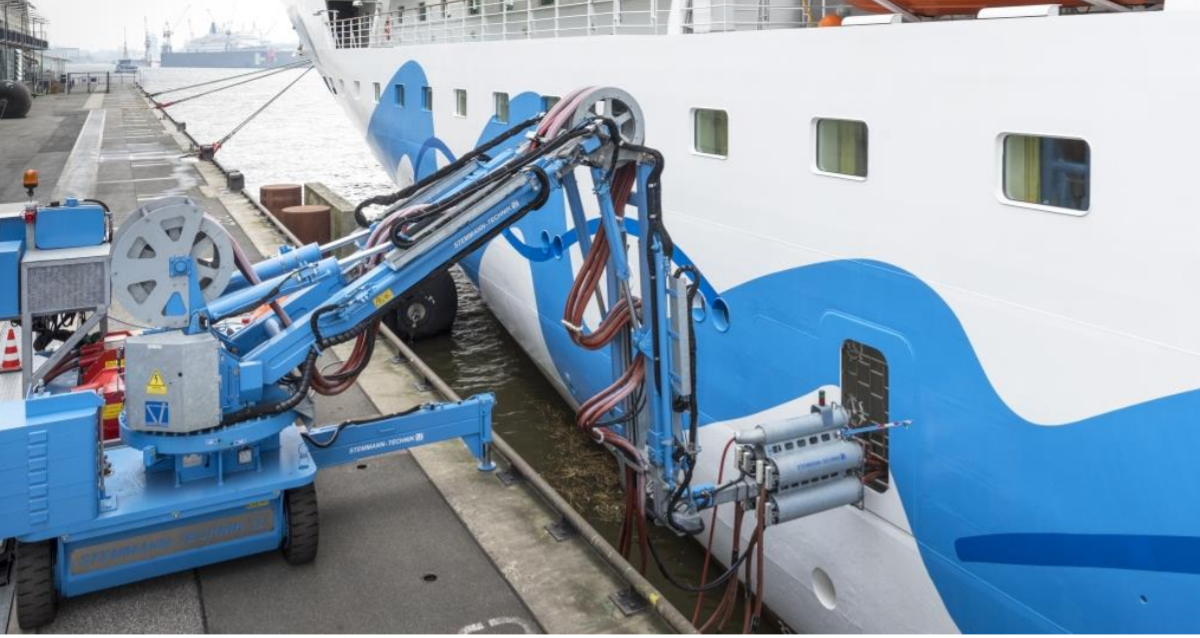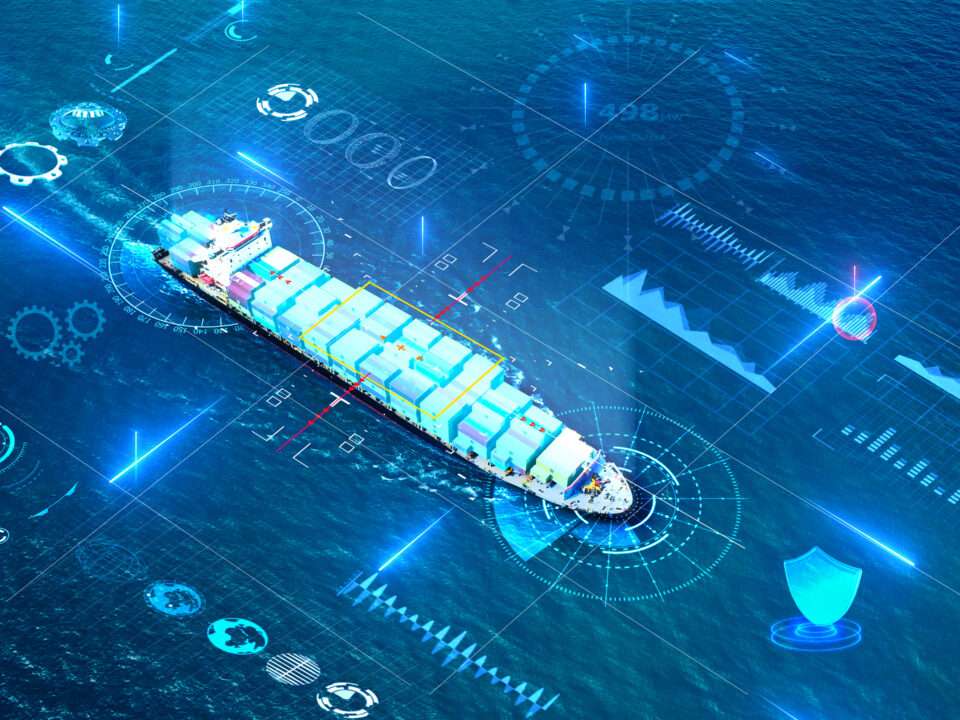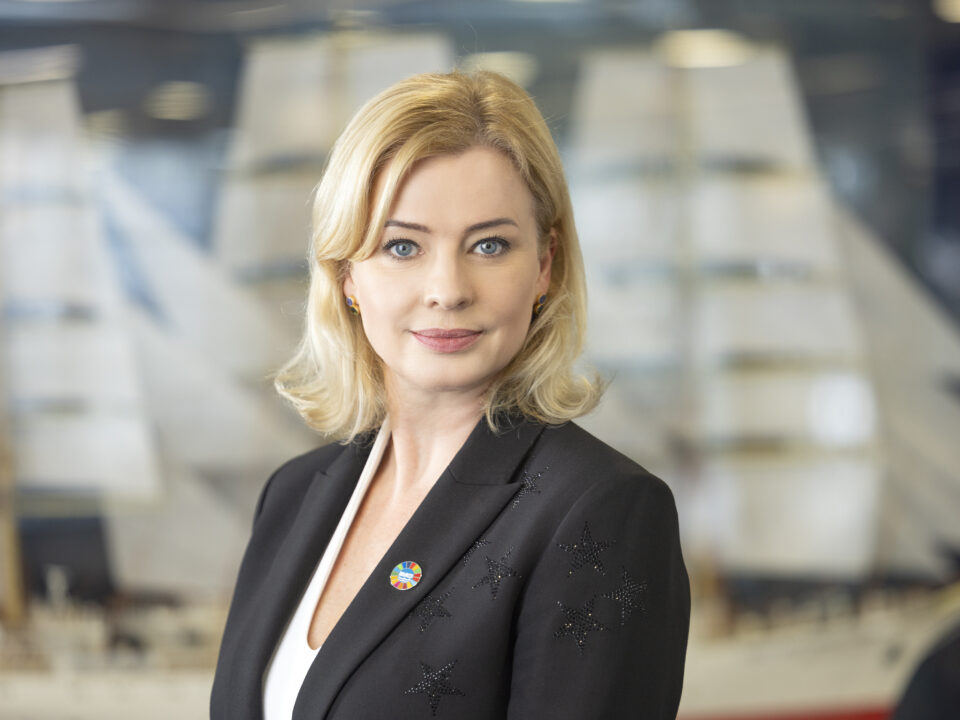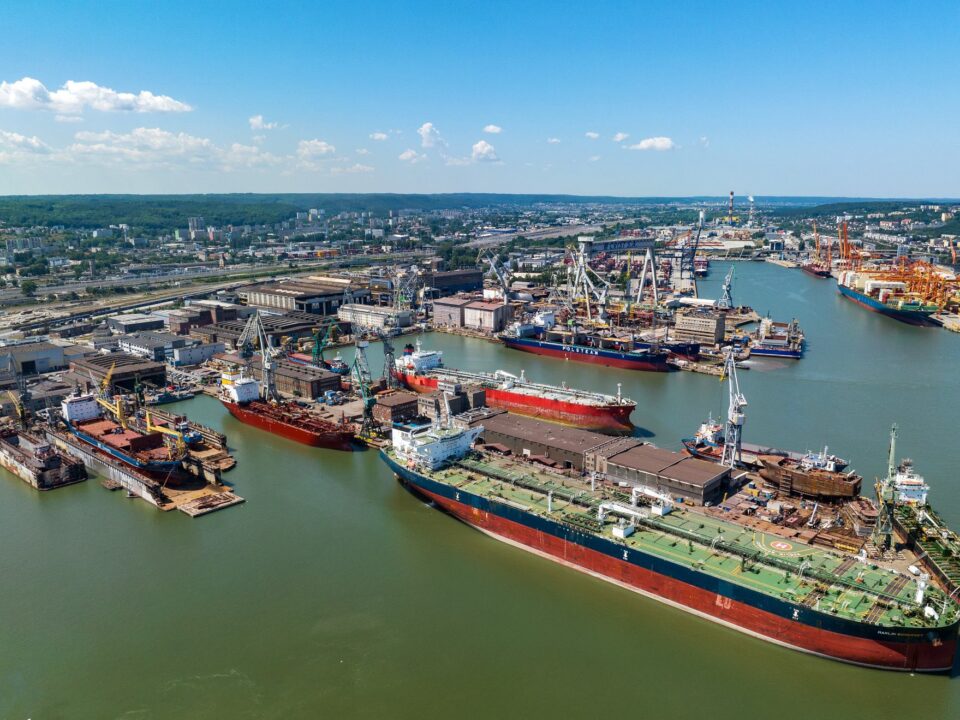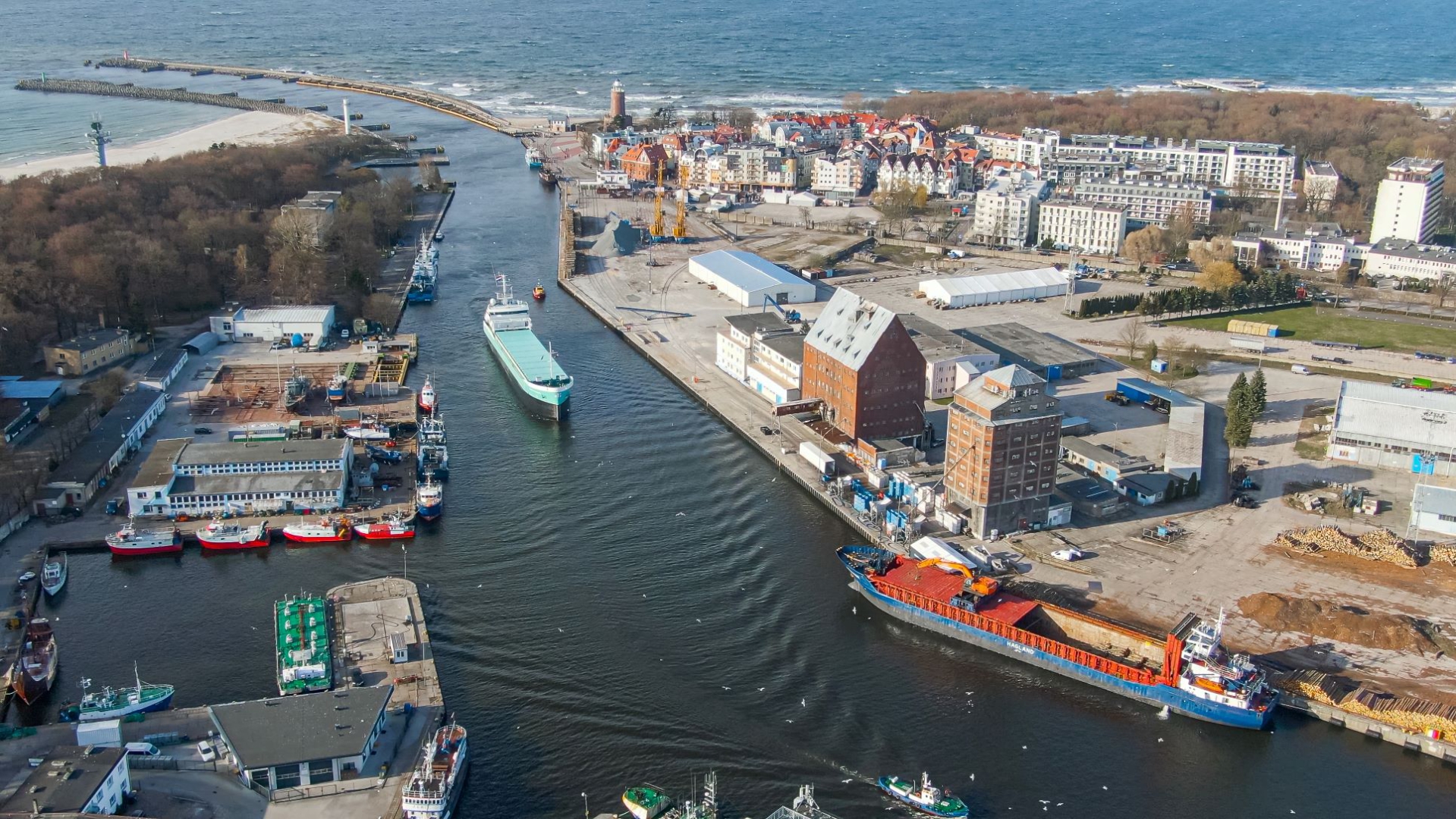
Supreme Audit Office on small ports
24 August 2023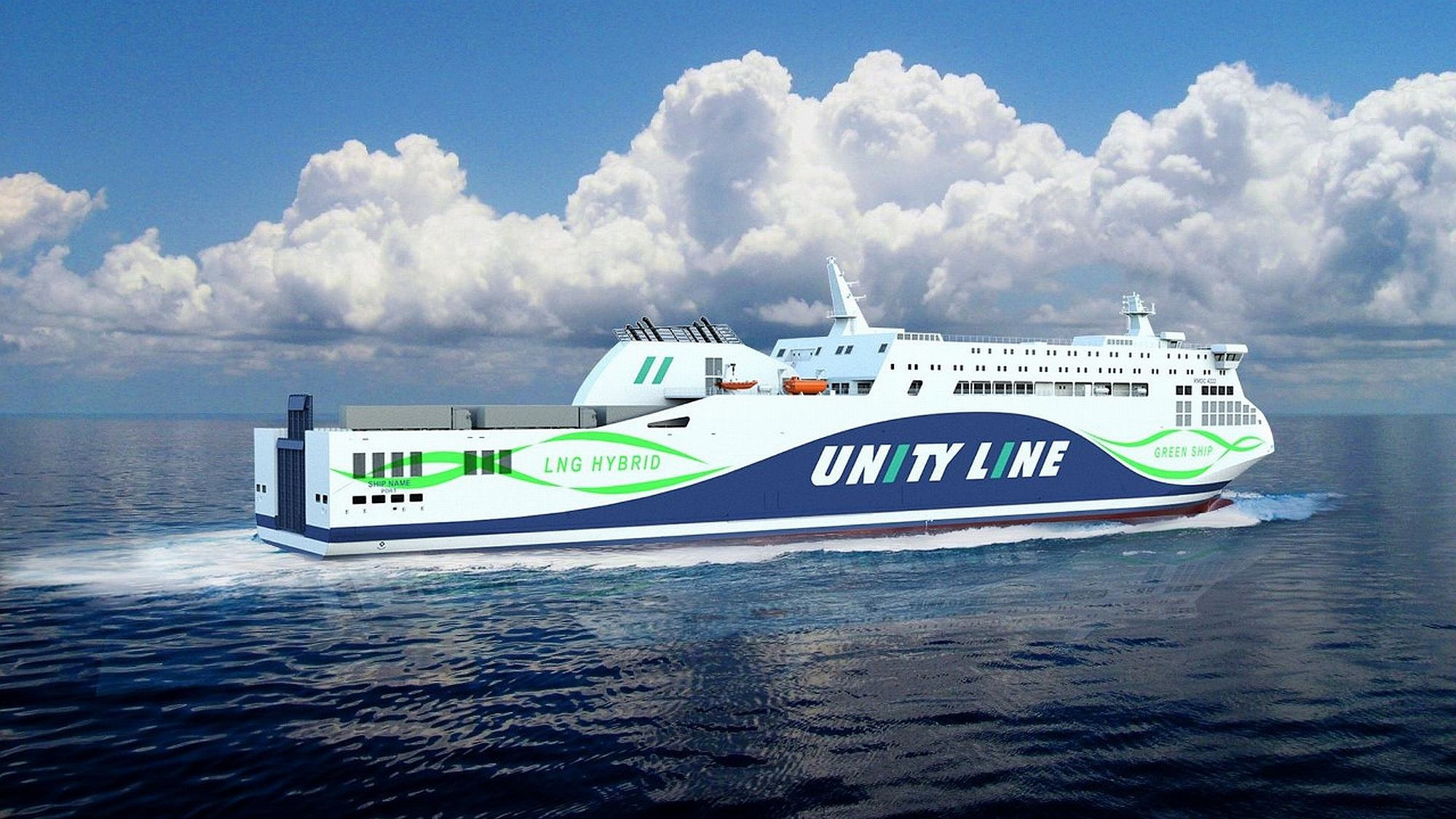
Modern technology industry
29 September 2023Polish ports are preparing to build onshore power supply (OPS) systems for ships. Although the use of such installations will soon be enforced by European Union regulations, for now the interest of shipowners in this regard is for the most part focused on passenger ferries.
The direct benefit of using OPS systems in ports is of course environmental protection – a vessel in the port is not using combustion engines, which clearly reduces CO2 emissions. Additional advantages include the absence of noise and extended life of auxiliary motors. In an ideal situation, i.e. if the ports relied exclusively on green energy, this way of decarbonization would be very effective. However, if OPS systems use energy from fossil fuels, the situation becomes absurd – there are no CO2 emissions at the port, but they are “transferred” to the place where power is generated.
The country’s first OPS system was built at the Public Ferry Terminal at the Port of Gdynia, which commenced operations mid-June 2022. The system was based on a relay station in the form of a built-in container (it weighs almost 30 tonnes!), a cable line laid along the Polish quay in a cable duct, cable outlets located in 3 places along the quay and a mobile crane. That last piece of equipment will move along the quay and feed the cable with an “outlet” to the ship.
The system is designed to power ships with an on-board 11kV 50Hz/60Hz installation from the onshore 15kV 50Hz energy grid. The power output of the connection to the ship is 3.5 MW, which means fast charging of ship batteries, even for a large ferry. The location of the new terminal was also important, as it is now adjacent to the city centre. The absence of the OPS system could cause pollution and noise emissions. The solution applied in Gdynia is also future-proof, as the OPS system may ensure power supply to transport ships powered by electric engines only, which may become more popular in the near future.
The ports of Szczecin and Świnoujście will implement the installation of OPS systems by 2030 in response to the EU Alternative Fuel Infrastructure Regulation (AFIR). This applies specifically to quays whose operation will meet the criteria required by the document, including in terms of vessel types, number of calls, and the duration of the vessel’s stay at the quay. In practical terms, the regulations will require container ships and passenger ferries to be connected to onshore power supply.
“As part of the “Expansion and modernization of technical infrastructure in the ports of Szczecin and Świnoujście” project, it is planned to outfit all quays at the Świnoujście ferry terminal with equipment for supplying power to ferries. Once the investment is completed, the system will be capable of supplying power at 50 Hz and 60 Hz with a rated output of up to 3 MW to ships at 5 ferry berths. Additional OPS installations at the port of Szczecin are at the initial design stage,” said Monika Woźniak-Lewandowska, Communications and PR Specialist at the Szczecin and Świnoujście Seaport Authority.
The system planned in Świnoujście should support virtually all interested vessels, thus the mention of dual frequency – some of the seagoing vessels have 50 Hz installations, while others have 60 Hz. The Polish power grid operates at 50Hz, hence the need to buy systems that can support both frequencies.
At the port of Gdańsk, the construction of the OPS system is going to be preceded by an expert analysis. Last year, the Port of Gdańsk Authority commissioned the development of a document titled “Analysis of the implementation of the onshore power supply (OPS) system for ships at the Port of Gdansk”. Conclusions drawn from that document will allow to answer the questions whether seagoing vessels are equipped to be supplied power from the port and what is or will be the future demand for this service at the port of Gdańsk.
“We aspire to be recognized as the leader in green initiatives, therefore we see the need to take actions aimed at reducing harmful emissions and striving to achieve the EU climate target through climate neutrality. The implementation of the OPS system will also ensure an increased level of competitiveness in relation to other ports in the Baltic Sea area, which will allow to consistently achieve goals defined in the Port of Gdańsk Development Strategy,” emphasized Łukasz Malinowski, president of the Port of Gdańsk Authority.
As part of recently implemented modernizations of selected quays, the Port of Gdansk has already secured a reserve of land that enables the installation of a power supply system in the form of a cable duct. The reserve will also be established in any future quays, either undergoing modernization or being newly constructed. The President of the Port of Gdańsk admits that currently there is little interest in onshore power supply for ships. This is mainly due to the lack of existing legislation that would make the application of this solution mandatory.
“However, based on performed analyses, we expect a higher interest in this solution among shipowners in the near future,” added Ł. Malinowski.
Article developed with Namiary na Morze i Handel magazine
phot. Namiary na Morze i Handel magazine



